Virupakasha temple is believed to be functioning uninterruptedly ever since its inception in the 7th century AD. This is one of the oldest functioning temples in India. This temple is located on the south bank of the river Tungabadra. Virupaksha means eyes without the form. virupa means no form and aksha means eyes. Virupaksha temple is the oldest and the principal destination in Hampi for pilgrims and tourists.


Virupaksha temple is the only temple that continued to be a gathering place of Hindus and frequented by pilgrims after the destruction of Hampi in 1565. The main gopura of the Virupakasha temple dominates Hampi’s skyline. It has a distinct presence in the area, as do the sculptures around its exterior.
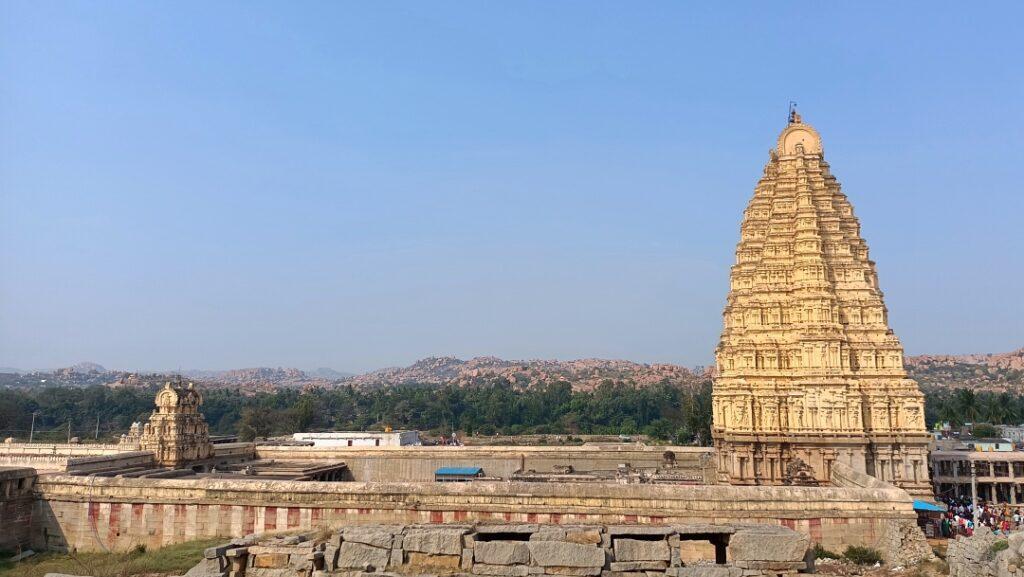
Parts of the Shiva, Pampa, and Durga temples existed much earlier. It started off as a little shrine and later developed into a huge complex during the Vijayanagara era. Over the centuries, the temple gradually expanded into a sprawling complex with many sub-shrines, pillared halls, dwaja sthamba (flag post), deepa sthamba (lamp post), towering gateways, and even a large temple kitchen.
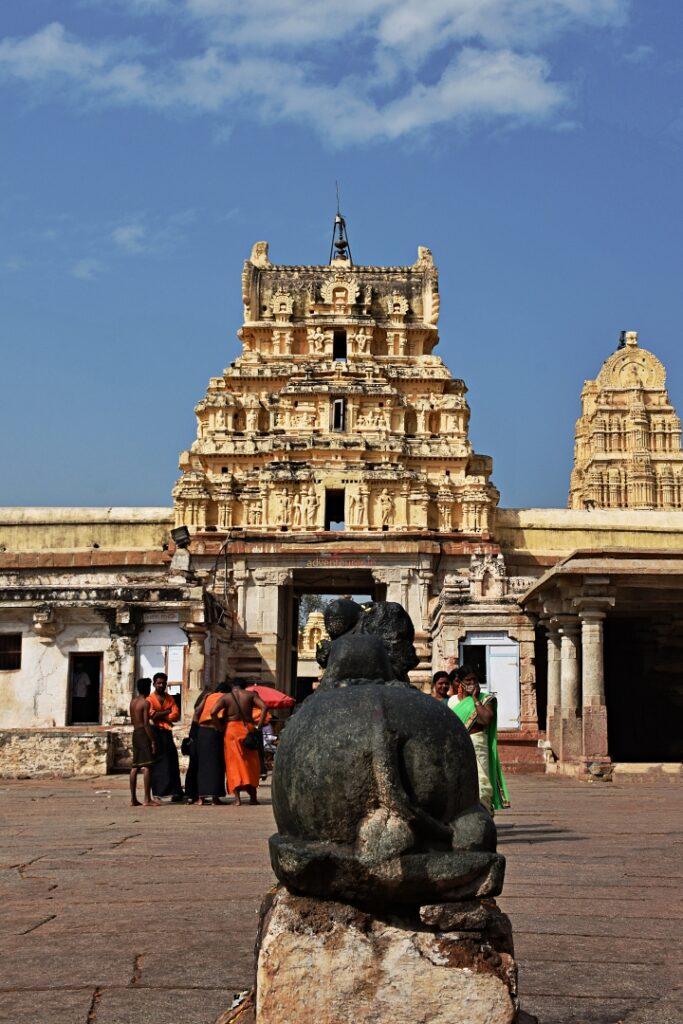
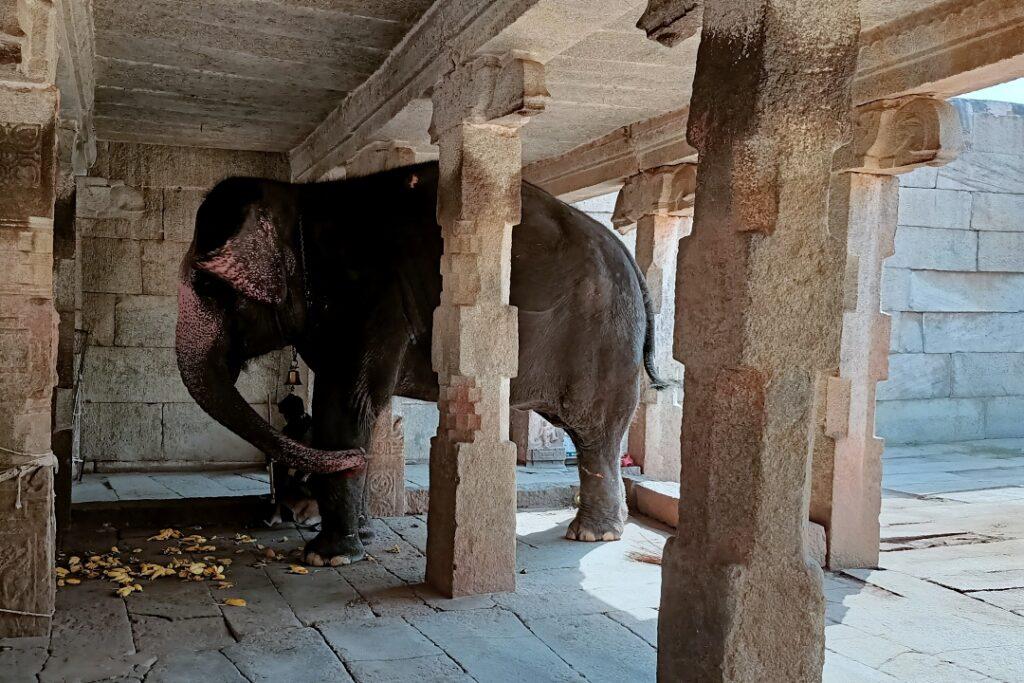
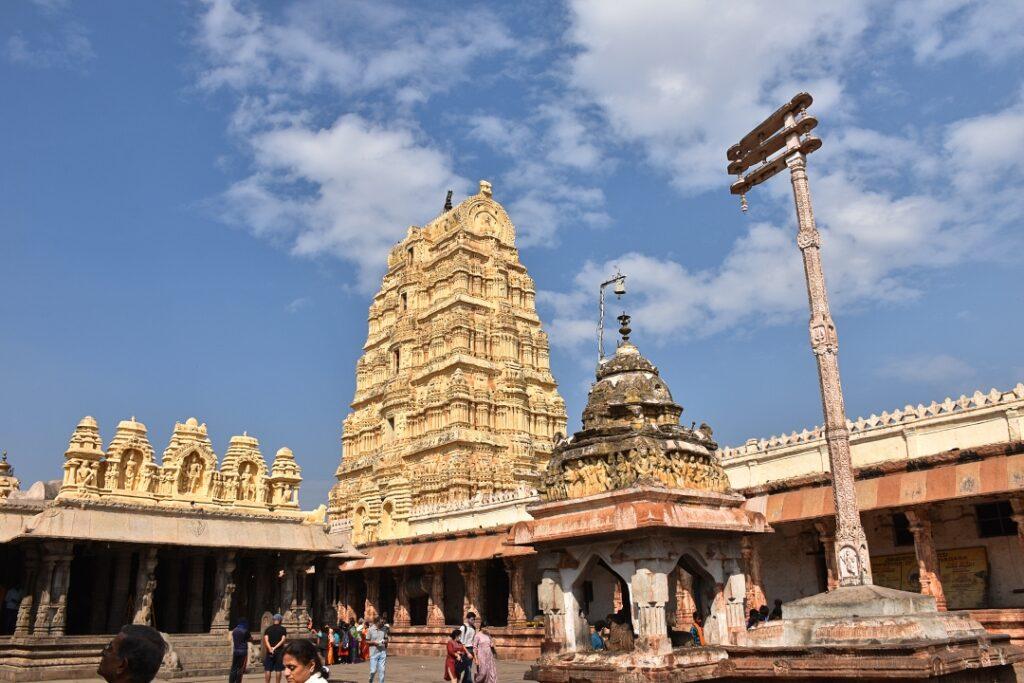
Access to the temple’s main entrance tower is through the chariot street, now popularly called the Hampi Bazaar.
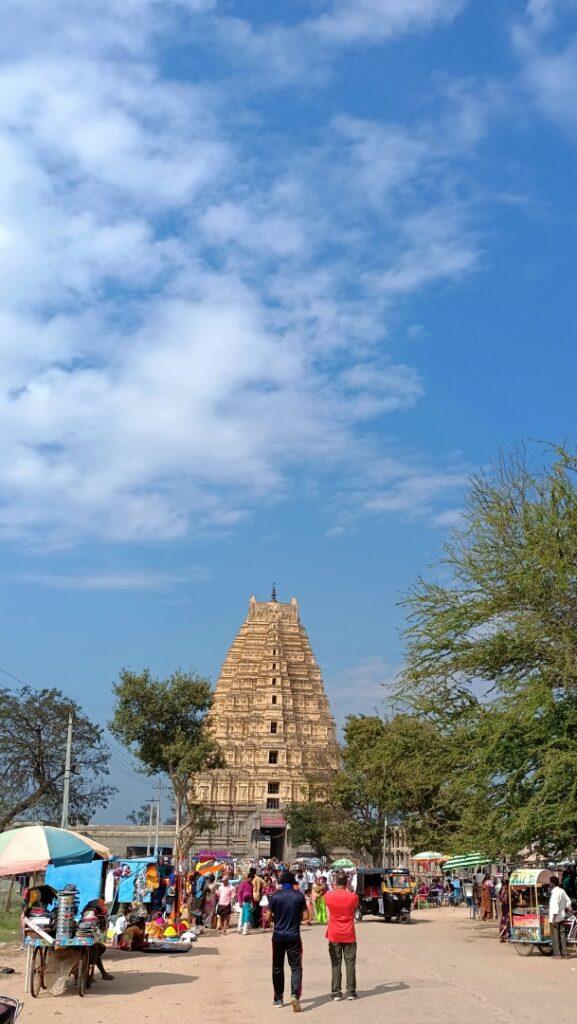
The temple faces eastwards, aligning the sanctums of the Shiva and Pampa Devi temples to the sunrise. A large 160 feet gopura (raja gopura) marks its entrance.
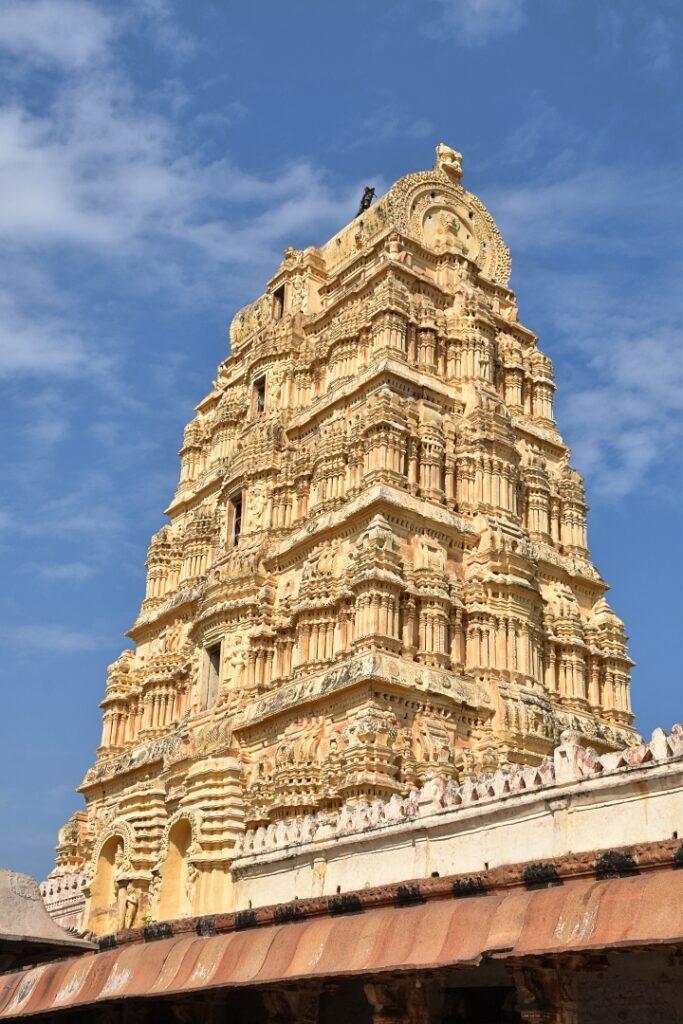
The gopura leads into a rectangular court that ends in another, smaller gopura. To its south side is a 100 pillared hall with sculptures from Ramayana and Mahabharatha on all four sides of each pillar.
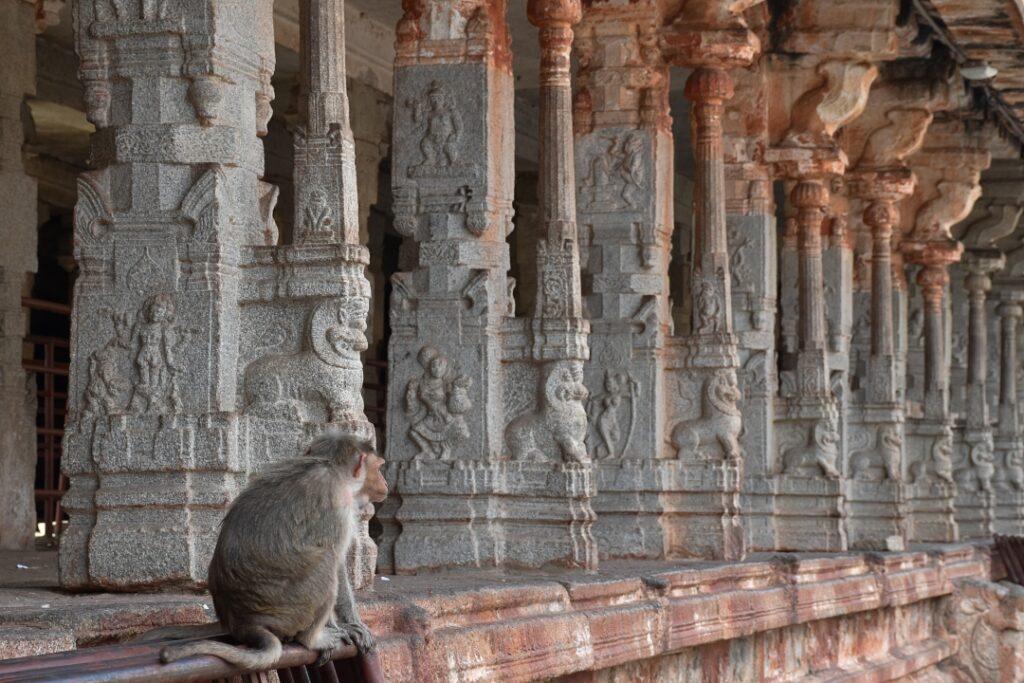
The courtyard after the small gopura has deepa stambha (lamp post) and Nandi.
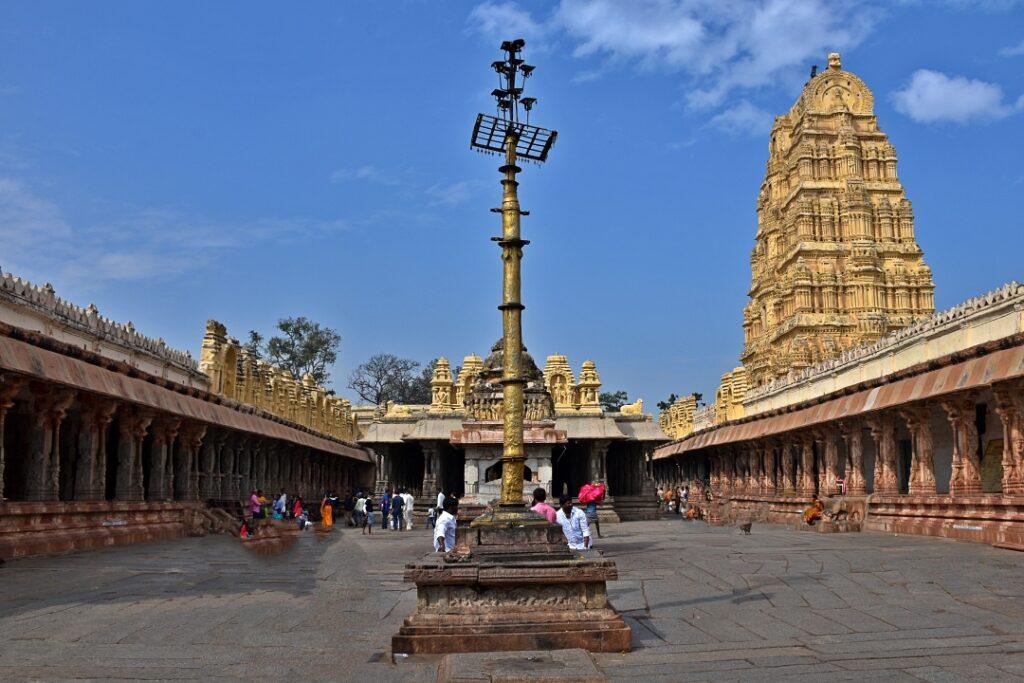
The three statues of Nandi in a shrine is a major attraction here.
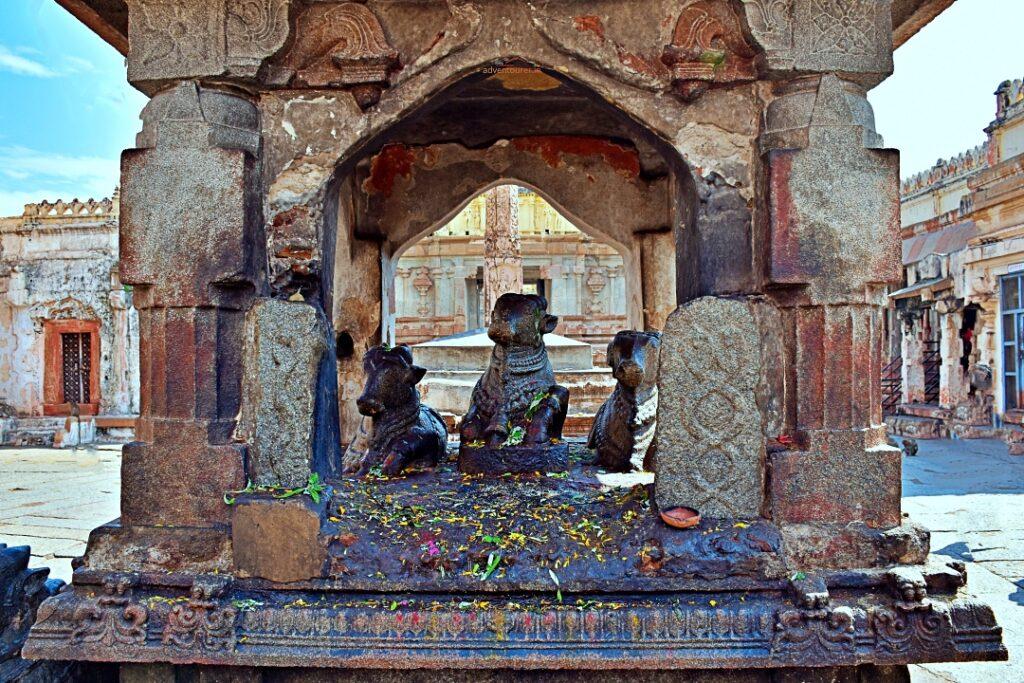
The courtyard after the small gopura leads to the main mantapa or ranga mantapa of the Shiva temple. This elevated open pavilion with 5 aisles and 38 pillars is used for temple rituals including the marriage ceremonies.
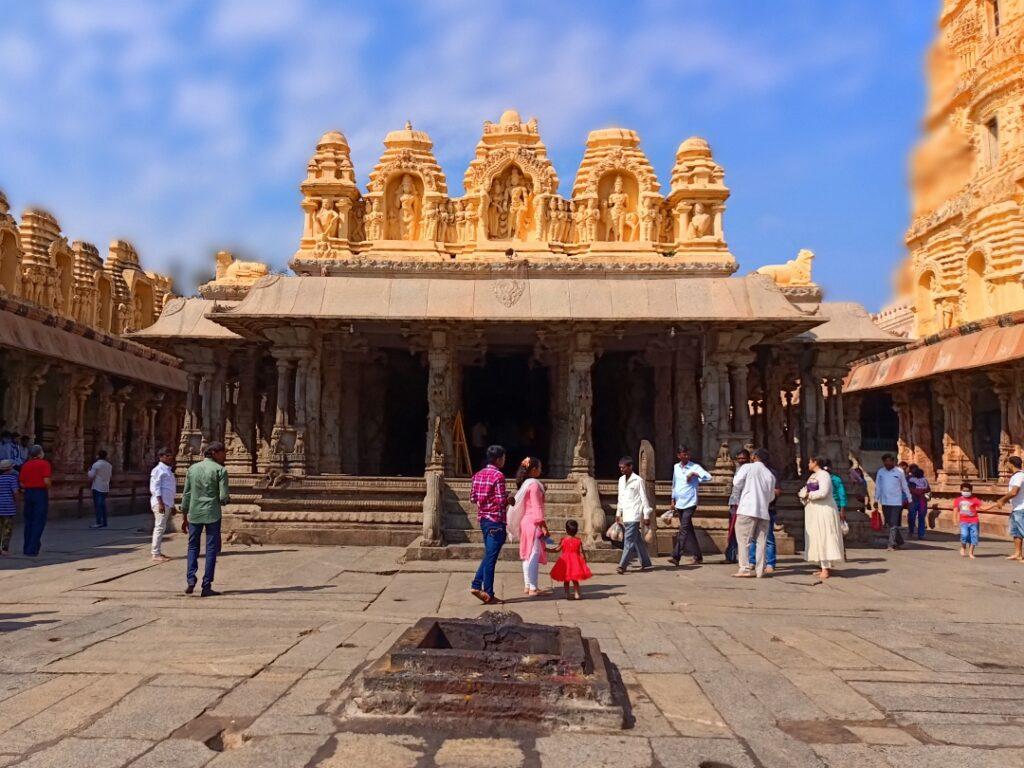
The ceiling of the open hall above the mantapa is painted, showing the Shaivism legend relating to Shiva-Parvati marriage, another section shows the legend of Rama-Seetha of the Vaishnavism tradition. A third section depicts the legend of the love god Kama shooting an arrow at Shiva to get him interested in Parvati. The fourth section shows the Advaita Hindu scholar Vidyaranya being carried in a procession.
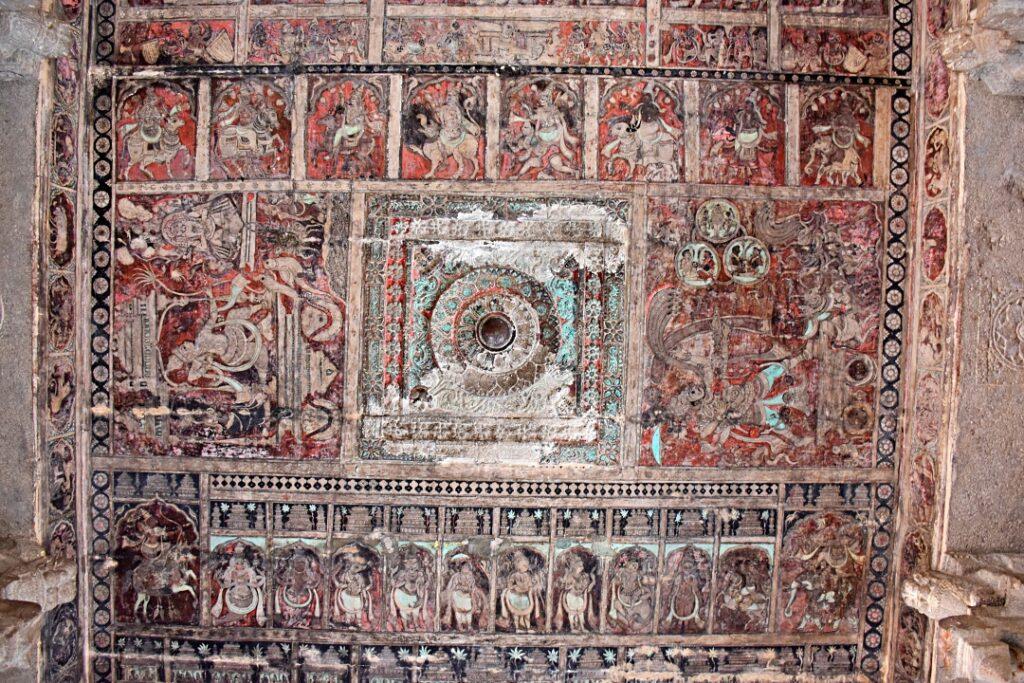
The pillars have outsized yalis, mythical animal with features of a horse, lion, and other animals with an armed warrior riding it, a characteristic Vijayanagara feature.
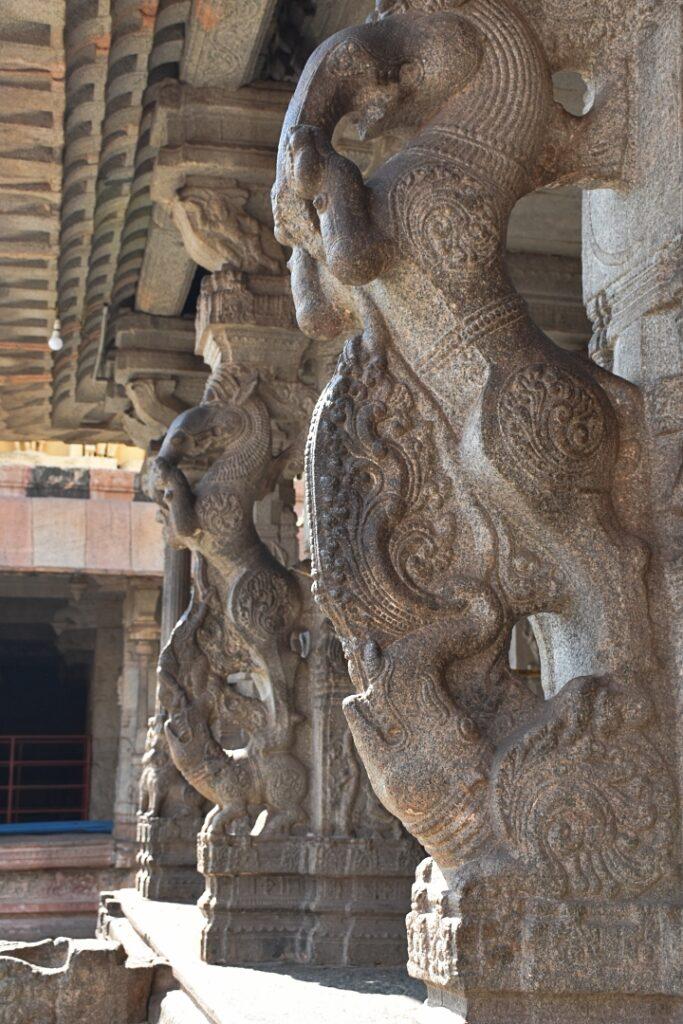
The garbha griha (sanctum) of the temple has a mukha-linga, a Shiva linga with a face embossed in brass. The ceiling of this inner hall is decorated with an open lotus motif. Two 4-armed guardian deities, about 3 feet tall, stand on either side of the entrance to the inner hall. The Virupaksha temple also has smaller shrines for two aspects of Parvati: Pampa and Bhuvaneshwari to the north of the main sanctum.
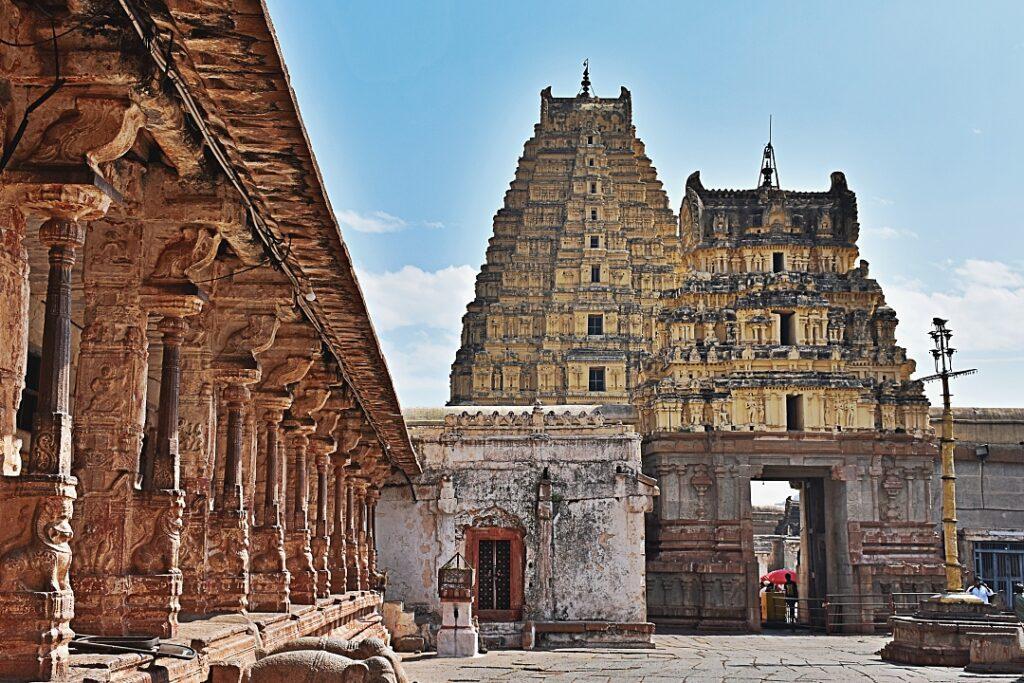
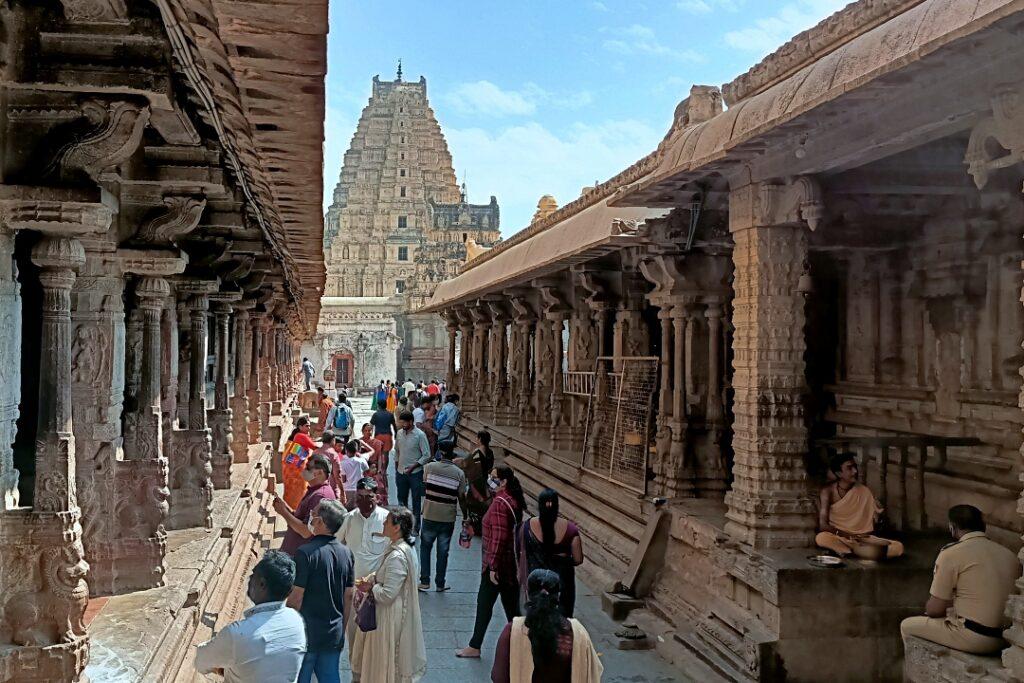
As you exit the sanctum, there is a shrine dedicated to the founder sage Vidyaranya. The saalu mantapa (pillared hall) on its right houses one of the architectural wonders of the Vijayanagara empire: the inverted shadow of the raja gopura.
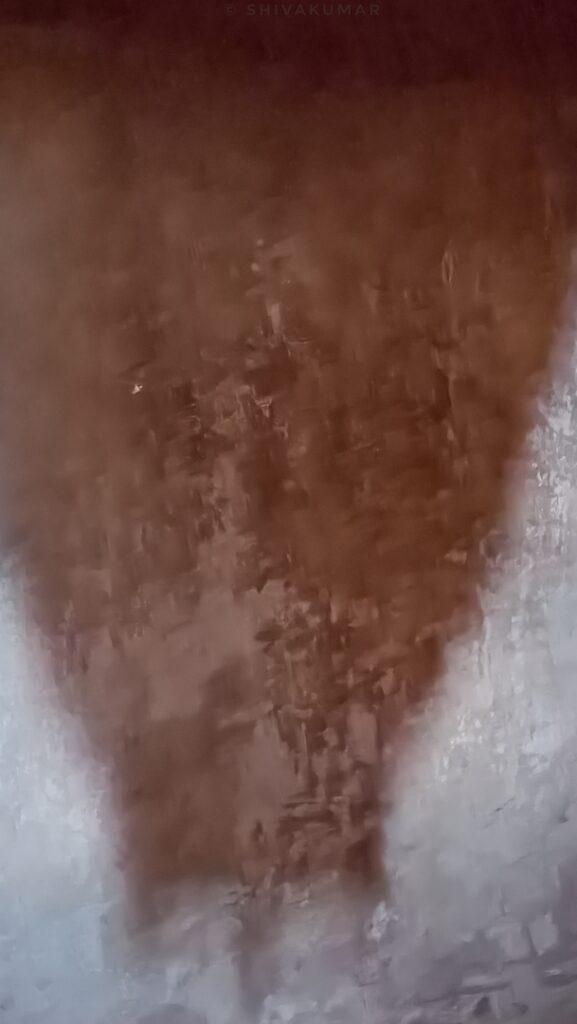
The temple architecture is designed such that the inverted shadow of the raja gopura falls more than 300 feet away on the wall of this saalu mantapa. The sunlight passes through a small opening on the wall of the saalu mantapa facing the raja gopura and casts an inverted shadow on the opposite wall of the mantapa. The small opening on the wall acts as an aperture. There is no other source of light in this saalu mantapa, other than the small opening. This is a pinhole camera effect created with stonework centuries before the effect was discovered and understood.
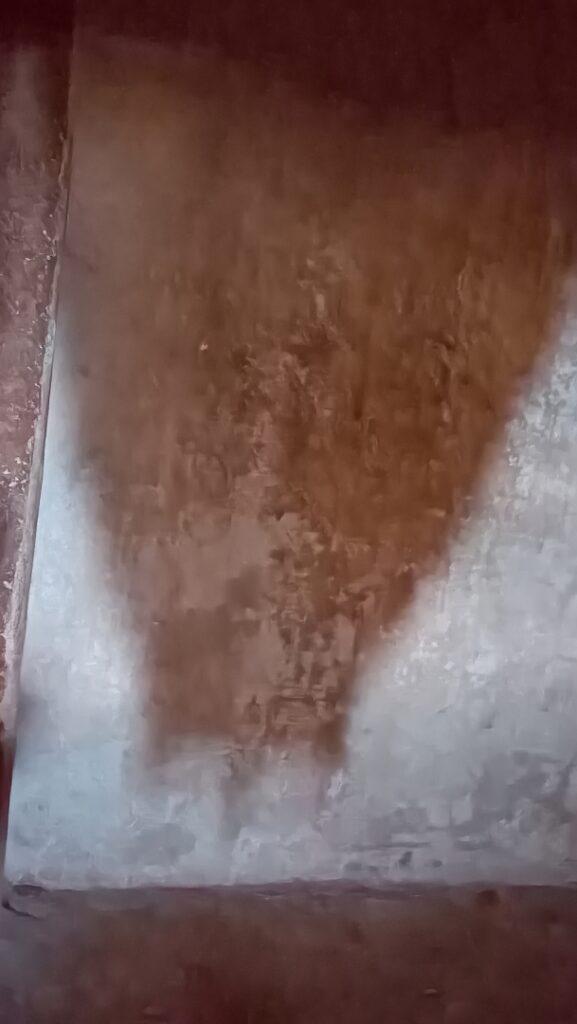
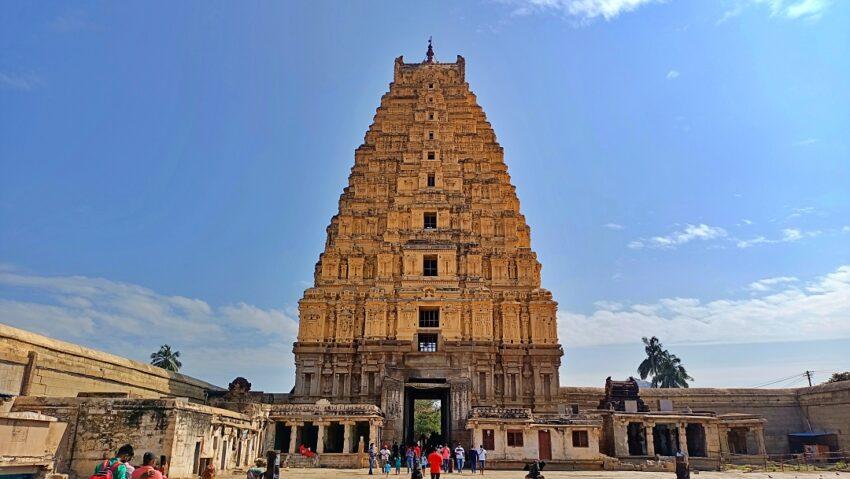
1 thought on “Virupaksha temple”